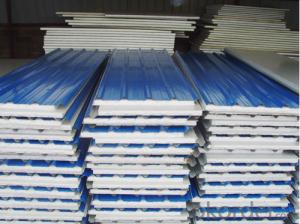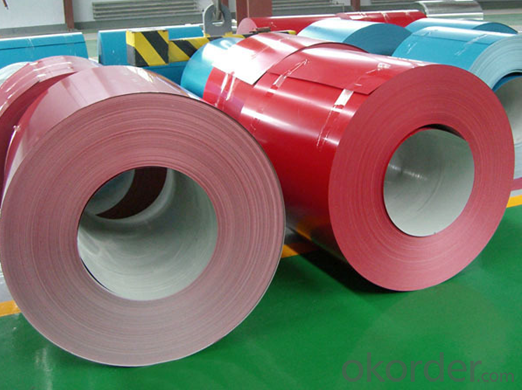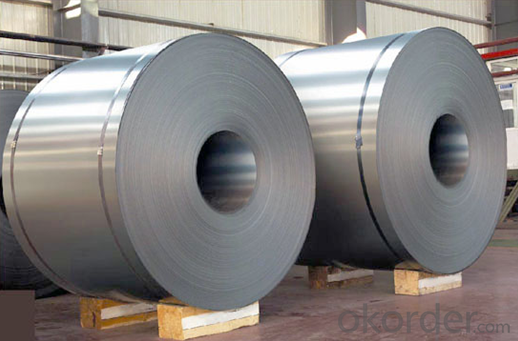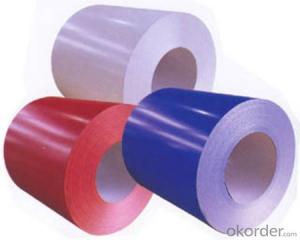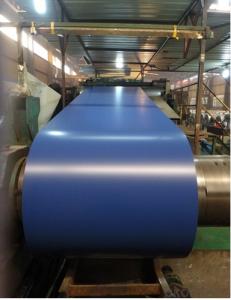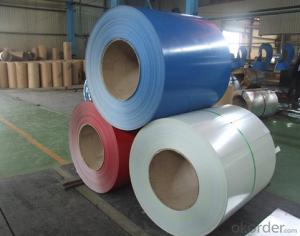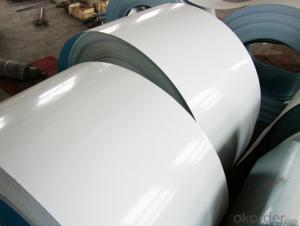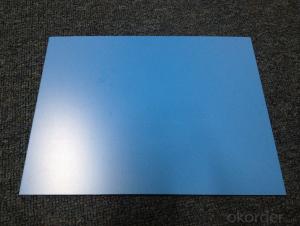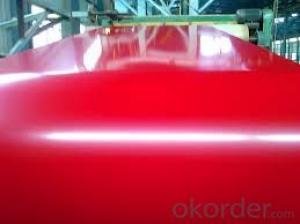PPGI/0.4mm-0.5mm Pre-Painted Galvanized Steel Roofing Sheet
- Loading Port:
- China main port
- Payment Terms:
- TT OR LC
- Min Order Qty:
- 25 m.t.
- Supply Capability:
- 100000 m.t./month
OKorder Service Pledge
OKorder Financial Service
You Might Also Like
Product Description
Prepainted galvanized steel coil, PPGI, PPGL, Prepainted galvalume/aluzincsteel, Color Coated Galvalume Steel Coil, Prepainted Galvalume Steel Coils, RAL color, 0.15-1.5mm, SGCC, CGCC, CGLC, DX51D, TDC51D, ASTM A653, CS TYPE, S280GO, S350GD, G550, JIS G3312, EN 10169 JIS G3322, ASTM A755/755M, comercial and structual quality
Specifications of Pre Painted Galvanized Steel Coil:
1) Capacity: More than 20, 000 tons per month for PPGI coil product manufacture
2) Standard: JIS G3302, JIS G3312, ASTM A653M/A924M 1998
3) Grade: SGCC CGCC, DX51D, TDC51D, ASTM A653 CS TYPE, S280GD, S350GD, G550
4) Thickness: 0.15mm-1.5mm
5) Zinc coating weight: Z60-275G/M2, G30-G90
Zinc coating: Z60, Z80, Z100, Z120, Z180, Z275, G30, G60, G90
Alu-zinc coating: AZ60, AZ80, AZ100, AZ120, AZ180, G30, G60, G90
6) Width: 600mm-1250mm, 914mm, 1000mm, 1200mm, 1219mm, 1220mm, 1250mm or according to the customer's request
7) Coil ID: 508mm-610mm
8) Coil Weight: 3-6mt, or according to the customer's request
9) Color: RAL, or customer sample color
RAL9016, RAL9002, RAL5015, RAL5002, RAL3000, RAL3020, RAL3009, RAL6005, RAL8017 etc.
10) Color coating type: PE, PVDF, SMP, HDP, etc.
Regular Polyester, Silicon Modified Polyester, Polyvinylidene Floride, PVDF, Super Low Gloss Polyester
11) Surface protection: PVC film protected according to customer requested
12) Min trial order: 25 tons for 1X20' per delivery
PPGI Manufacture
ThicknessWidth LengthColor Coating type
0.2mm-1.5mm600mm-1250mmAs your requestRALPE, PVDF, SMP, HDP, etc.
Coating Chief Feature
ItemThicknessTypeFeature
Laminated film50μ MPolyethyleneProtecting from scratchs and contamination
(option)
Top coat20μ MPolyester FluorineChemical resistance and formability
Primer coat5μ MPolyesterWorkability, corrosion resistance and adhesion to the primer coating
Chemical treatment1μ MChromateGood adhesion and corrosion resistance
Substrate0.2mm-1.2mmGI. GL, ALGI. GL, AL
Back coat5± 2μ MEpoxyCorrosion resistance and adhesion to the substrate
Characteristics:
20 years outdoor liability approved, Corrosion protection, Long life-time for coated color
APPLICATION:
Exterior decoration of buildings: Roof and wallboards of industrial, commercial, residential and public facilities
Interior decoration of buildings: Wallboards, ceiling boards, partition boards, fireproof doors
Building accessories: Window panels, signboards
Home appliances: Oil/gas boilers, rice buckets, portable gas burners, etc.
World wide customer satisfaction:
More than 50 worldwide customers none-risky experiences approved.
Yogic has been exporting steel coils to more than 50 countries directly. Our long term supply extends to USA, UK, Germany, Italy, Spain, Belgium, France, Poland, Greece, Ukraine, Belarus, Russia, Turkey, Egypt, Saudi Arabia, Iran, Ethiopia, Niger, Brazil, Colombia, Chile, Peru, Australia, New Zealand, etc...
Classified symbol | Yield Point Minimum N/mm2 | Tensile Strength Minimum | Elongation Minimum % | Application | ||||
N/mm2 | Nominal Thickness mm (t) | |||||||
JIS | CNBM | 0.25≤t<0.4< td=""> | 0.4≤t<0.6< td=""> | 0.6≤t<1.0< td=""> | 1.0≤t<1.6< td=""> | |||
G3312 | specification | |||||||
CGCC | CGCC | -205 | -270 | -20 | -21 | -24 | -24 | Commercial |
CGCD | CGCD | --- | 270 | --- | 27 | 31 | 32 | Drawing |
--- | CG340 | 245 | 340 | 20 | 20 | 20 | 20 | Structural |
CGC400 | CG400 | 295 | 400 | 16 | 17 | 18 | 18 | Structural |
CGC440 | CG440 | 335 | 440 | 14 | 15 | 16 | 18 | Structural |
CGC490 | CG490 | 365 | 490 | 12 | 13 | 14 | 16 | Structural |
CGC570 | CG570 | 560 | 570 | --- | --- | --- | --- | Structural |
ASTM Designation | Yield Point Minimum | Tensile Strength Minimum | Elongation Minimum % | Application | Q/BQB 445-2004(China standard) | ASM A653/A653M | JISG 3312 | |
ksi(MPa) | ksi(MPa) | TDC51D+Z | (CS TYPE A+Z) | CGCC | ||||
A653(M)-99 CS TYPE A,B,C | --- | --- | --- | Commercial | TDC52D+Z | CGCD | ||
A653(M)-99 FS | --- | --- | --- | Lock Forming | TS250GD+Z | (G250+Z) | - | |
A653(M)-99 DS | --- | --- | --- | Drawing | TS300GS+Z | (G300+Z) | CGC 400 | |
A653(M)-99 SS Grade33(230) | 33(230) | 45(310) | 20 | Structural | TS350GD+Z | (G350+Z) | CGC490 | |
A653(M)-99 SS Grade37(255) | 37(255) | 52(360) | 18 | Structural | TS550GD+Z | (G550+Z) | CGC570 | |
A653(M)-99 SS Grade40(275) | 40(275) | 55(380) | 16 | Structural | ||||
A653(M)-99 SS Grade50(345) | 50(345) | 65(450) | 12 | Structural | ||||
A653(M)-99 SS Grade80(550) | 80(550) | 82(570) | --- | Structural | ||||
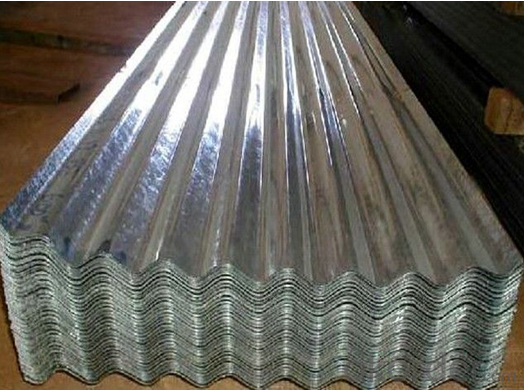
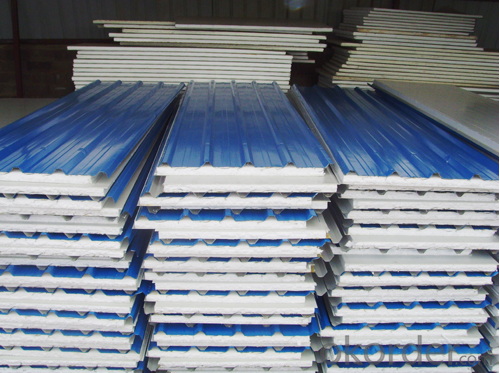
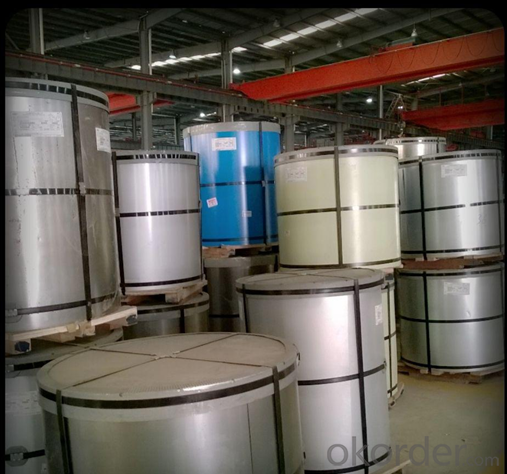
FAQ
1. Is the sample available?
Yes, samples can be sent for test if you need.
- Q: What are the environmental considerations when using steel coils?
- Some environmental considerations when using steel coils include the extraction and processing of raw materials, energy consumption during production, and the potential for air and water pollution. Additionally, the disposal of steel coils at the end of their life cycle should also be taken into account to minimize waste and promote recycling.
- Q: What is the standard length of steel coils?
- The standard length of steel coils can vary depending on the industry and specific requirements, but common lengths range from 30 feet to 60 feet.
- Q: What are the limitations of using steel coils in certain applications?
- There are several limitations to consider when using steel coils in certain applications. Firstly, steel coils can be heavy and bulky, which makes them less suitable for applications where reducing weight is crucial. Industries like aerospace or automotive, which prioritize lightweight materials for fuel efficiency and performance improvement, may not find steel coils to be the best choice. Secondly, steel coils are prone to corrosion, especially in environments with high moisture or exposure to chemicals. This limitation can restrict their use in applications where corrosion resistance is crucial, such as marine or coastal structures. To mitigate this limitation, additional protective coatings or regular maintenance may be necessary, resulting in increased costs and maintenance efforts. Furthermore, steel coils may lack the necessary flexibility or malleability required for certain applications. Industries like construction or manufacturing, which often require materials to be easily shaped or bent into specific forms, may find steel coils inadequate in terms of flexibility. This limitation can create difficulties in achieving desired designs or may necessitate additional processing steps to mold the steel coils into the desired shape. Lastly, steel coils may have limitations in terms of temperature resistance. In high-temperature applications like furnaces or power generation, steel coils may experience thermal expansion or deformation, compromising their structural integrity. In such cases, alternative materials with higher temperature resistance, such as refractory metals or ceramics, may be more appropriate. Overall, while steel coils are versatile and widely used materials, their limitations in weight, corrosion resistance, flexibility, and temperature resistance can restrict their use in certain applications. It is important to consider these limitations and assess the specific requirements of each application when selecting materials to ensure optimal performance and durability.
- Q: What are the common coil grades available for steel coils?
- There are several common coil grades available for steel coils, each with its own specific properties and applications. Some of the most commonly used coil grades include: 1. Hot Rolled Coils (HRC): This grade is produced by heating a slab of steel above its recrystallization temperature and then rolling it into a coil. HRC coils are known for their excellent weldability and formability, making them suitable for a wide range of applications such as construction, automotive manufacturing, and general engineering. 2. Cold Rolled Coils (CRC): These coils are produced by further processing hot rolled coils through cold reduction, which involves passing the steel through a series of rollers at room temperature. CRC coils have superior surface finish and dimensional accuracy, making them ideal for applications that require a smooth and uniform appearance, such as automotive body panels, appliances, and electrical equipment. 3. Galvanized Coils (GI): Galvanized steel coils are created by coating regular carbon steel coils with a layer of zinc through a hot-dip galvanizing process. This provides excellent corrosion resistance, making GI coils suitable for outdoor applications like roofing, fencing, and structural components. 4. Stainless Steel Coils: Stainless steel coils are manufactured from a variety of grades, with the most common being austenitic (such as 304 and 316) and ferritic (such as 430). Stainless steel coils offer excellent corrosion resistance, high temperature resistance, and aesthetic appeal, making them widely used in industries like food processing, chemical processing, and architecture. 5. Electro-galvanized Coils (EG): Electro-galvanized coils are similar to GI coils, but the zinc coating is applied using an electrolytic process instead of hot-dipping. EG coils have a thinner and smoother zinc layer, making them suitable for applications that require a brighter and more aesthetic appearance, such as automotive parts, appliances, and decorative items. These are just a few of the common coil grades available for steel coils. The selection of the appropriate grade depends on factors such as the intended application, required mechanical properties, and desired aesthetics. It is important to consult with steel suppliers or industry experts to determine the most suitable coil grade for a specific application.
- Q: How are steel coils used in the manufacturing of braking systems?
- Steel coils are used in the manufacturing of braking systems as they are commonly used to make brake pads and brake rotors. Steel coils are processed and shaped into the required forms to create these essential components, which play a crucial role in the braking system's functionality and performance.
- Q: What are the common coil diameter and weight combinations available for steel coils?
- The common coil diameter and weight combinations available for steel coils vary depending on the specific requirements and industry standards. However, there are some commonly used combinations that are widely available in the market. In terms of coil diameter, the most common sizes range from 24 inches (610 mm) to 72 inches (1829 mm). These diameters are typically used for various applications in industries such as automotive, construction, and manufacturing. Regarding coil weight, the range can vary significantly depending on the type and thickness of the steel being coiled. For hot-rolled coils, the weight typically ranges from 5 to 30 metric tons. Cold-rolled coils usually have weights between 2 to 20 metric tons. Coils with larger weights are commonly used for heavy-duty applications, while lighter coils are preferred for more delicate or precise applications. It is important to note that these are just general guidelines, and the actual coil diameter and weight combinations can be customized based on the specific needs of the customer. Different manufacturers and suppliers may offer a wide range of options to accommodate various industry requirements. Therefore, it's always advisable to consult with the specific supplier to determine the available coil diameter and weight combinations that best suit your specific application.
- Q: How are steel coils used in the production of electronic devices?
- Steel coils are used in the production of electronic devices in a variety of ways. One common use is in the manufacturing of transformers and inductors, which are crucial components in many electronic devices. Transformers and inductors consist of a coil of wire wound around a core, and steel coils are often used as the core material due to their magnetic properties. The steel coils used in these components help to enhance the magnetic fields generated by the coils, enabling efficient energy transfer and voltage regulation. The magnetic properties of steel, such as its high permeability and low hysteresis loss, make it an ideal material for these applications. Additionally, steel coils are also used in the production of printed circuit boards (PCBs). PCBs are the backbone of most electronic devices and consist of a flat board made of non-conductive material, such as fiberglass, with a thin layer of copper traces etched onto it. These copper traces form the electrical connections between various components on the board. Steel coils are used in the production of PCBs as part of the fabrication process. They are typically used to create the stencils that are used to apply solder paste onto the board before component placement. The steel coils are laser-cut to create precise stencil patterns, allowing for accurate and consistent solder paste application. In summary, steel coils play a vital role in the production of electronic devices. They are used in the manufacturing of transformers and inductors, where their magnetic properties enhance energy transfer and voltage regulation. Steel coils are also utilized in the fabrication of PCBs, where they are used to create stencils for solder paste application. Overall, the use of steel coils helps ensure the efficient and reliable operation of electronic devices.
- Q: How are steel coils inspected for coil set using deflection measurement?
- Steel coils are commonly inspected for coil set, a condition where the coil exhibits a curvature along its length, by utilizing deflection measurement techniques. Deflection measurement involves applying a force on the coil and measuring the resulting deviation from its original shape. To inspect for coil set, the steel coil is placed on a testing apparatus that can apply controlled pressure to the coil. This apparatus typically consists of a set of rollers or hydraulic cylinders that can exert force on the coil's surface. The first step in the inspection process is to secure the coil in place, ensuring it is properly aligned and centered on the testing apparatus. Once the coil is in position, the apparatus applies a known force along the length of the coil. This force is typically applied in a consistent and controlled manner to ensure accurate measurements. As the force is applied, the deflection of the coil is measured using sensors or gauges positioned at specific points along the length of the coil. These sensors can detect even small deviations from the original shape of the coil. The deflection measurements are recorded and analyzed to determine the severity of coil set. Typically, a set of predetermined acceptance criteria is used to assess the coil's condition. If the recorded deflection measurements exceed these criteria, it indicates the presence of coil set. The severity of the coil set can be determined by comparing the actual deflection measurements with the acceptable range specified by the criteria. Deflection measurement is an effective method for inspecting steel coils for coil set as it provides quantitative data on the deviation from the original shape. This information allows manufacturers to identify and address any coil set issues, ensuring the quality of the steel coils before further processing or shipment to customers.
- Q: How are steel coils used in the manufacturing of tools?
- Steel coils are often used in the manufacturing of tools as they provide a sturdy and durable material to create various components of the tools. The coils are shaped and cut into specific sizes and shapes to form the tool's body, handles, or blades. This allows for the production of high-quality tools that can withstand heavy use and provide the necessary strength and reliability required for different applications.
- Q: How are steel coils inspected for surface finish using profilometry?
- Steel coils are inspected for surface finish using profilometry by measuring the surface topography using a profilometer. The profilometer scans the surface of the steel coil and records the deviations from the ideal surface. This data is then used to determine the roughness, waviness, and other surface parameters of the steel coil, providing a quantitative assessment of its surface finish quality.
Send your message to us
PPGI/0.4mm-0.5mm Pre-Painted Galvanized Steel Roofing Sheet
- Loading Port:
- China main port
- Payment Terms:
- TT OR LC
- Min Order Qty:
- 25 m.t.
- Supply Capability:
- 100000 m.t./month
OKorder Service Pledge
OKorder Financial Service
Similar products
Hot products
Hot Searches
Related keywords
